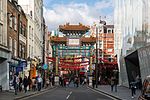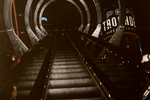The Flamingo Club
1952 establishments in England1967 disestablishments in EnglandDefunct jazz clubsEngvarB from October 2017Jazz clubs in London ... and 4 more
Music venues completed in 1952Music venues in LondonNightclubs in LondonSoho, London

The Flamingo Club was a jazz nightclub in Soho, London, between 1952 and 1969. It was located at 33–37 Wardour Street from 1957 onwards and played an important role in the development of British rhythm and blues and modern jazz. During the 1960s, the Flamingo was one of the first clubs to employ fully amplified stage sound and used sound systems provided by ska musicians from the Caribbean. The club had a wide social appeal and was a favourite haunt for musicians, including The Who.No 37 Wardour Street was previously the address of the Shim Sham Club, which opened in 1935 and was known as "London's miniature Harlem".
Excerpt from the Wikipedia article The Flamingo Club (License: CC BY-SA 3.0, Authors, Images).The Flamingo Club
Rupert Court, City of Westminster Chinatown
Geographical coordinates (GPS) Address Nearby Places Show on map
Geographical coordinates (GPS)
| Latitude | Longitude |
|---|---|
| N 51.5113 ° | E -0.1322 ° |
Address
Sunrise
Rupert Court
W1D 6PS City of Westminster, Chinatown
England, United Kingdom
Open on Google Maps







